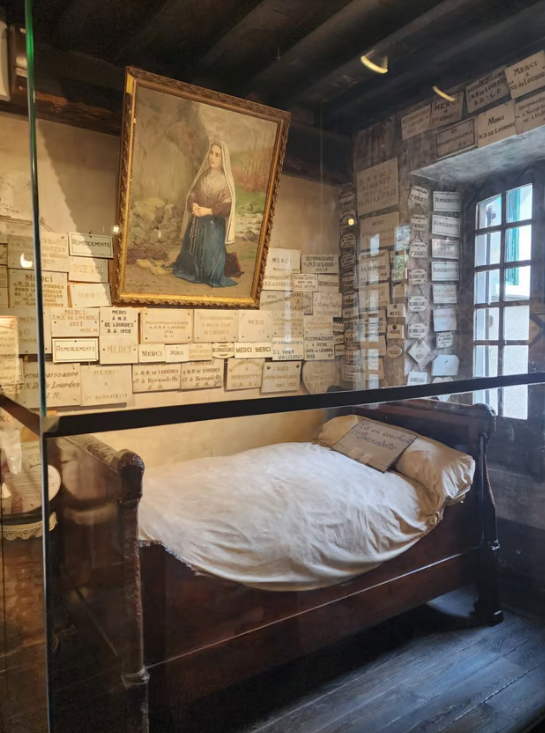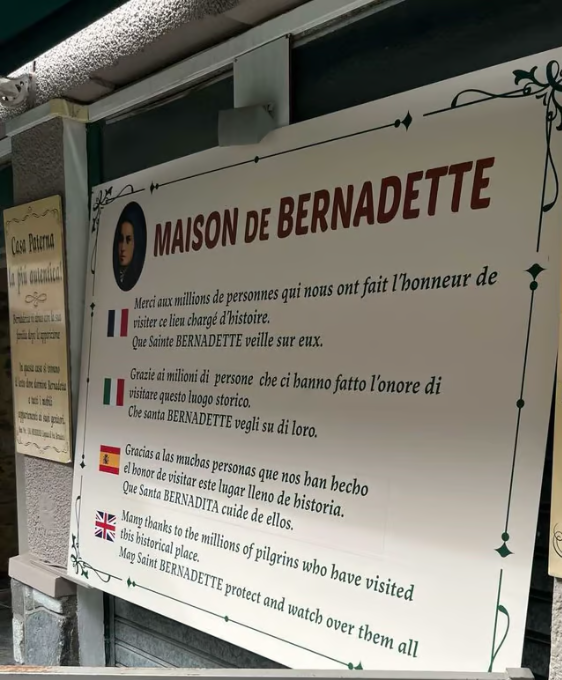Growing up, I was somewhat intrigued by most family-owned grottos in corners of well-curated lawns or in wide open spaces in vast haciendas. Some were simple with two sculptures, while others were more complicated, complete with running water.
However, no matter the grotto, there was always a young girl in tattered shepherd’s clothes, on her knees, looking up into the image of the Blessed Virgin Mary — now fondly known as our Lady of Lourdes.
Her name: Bernadette Soubirous.

Several eons ago, on my initial visit to the town of Lourdes in the foothills of the Pyrénées — many a pilgrim and devotee’s dream destination — I was in awe of the Sanctuary of Our Lady of Lourdes’ huge complex. The area contains three major chapels, namely, Basilica of Our Lady of the Immaculate Conception, the Rosary Basilica and the Basilica of St. Pius X. This place was called the Massabielle, where the Marian apparitions were reported.

However, we didn’t see even a shadow of Bernadette — most specially in the grotto where it all began. “Wasn’t she the bearer of all messages from Our Lady?,” I thought. Only then did I realize my expectations did not live up to reality.
I then wanted to know more about the chosen one. So, on a subsequent visit at one of the more popular religious destinations — the center of various activities organized or otherwise — I made a pilgrimage, just a brief walk from the sanctuario, to the Maison Paternelle de Saint Bernadette, the home of her parents and her birthplace.

My quest began through archival photographs and well-documented information. Here’s what I can recall.
Misery
We were then informed that Bernadette Soubirous belonged to a family of millers and resided at The Mill of Boly. She was baptized in Saint Peter’s Church — which, sadly, is no longer in existence.
Due to a bad accident, her mother lost her milk — and thus, could not breastfeed. So her daughter was entrusted to Marie Lagues, a friend and a wet nurse whose baby passed on at childbirth.
From here on, misery took over. Barely a toddler, the family was forced out of the mill. The father lost his job due to the advances of technology. Compounded with chronic health problems, poverty crept in and they had to settle in a one-room stable aptly called The Dungeon. The couple and their four kids — the brood eventually grew to nine — had to squeeze into a former jail filled with squalor.

The dreaded cholera plague broke out and unfortunately, Bernadette suffered from sores to no end. Due to the reversal of fortunes, they had to opt for just the most basic of treatments. Soon after, she likewise contracted asthma. And thus started her lifelong battle with the illness.
At age 13, she moved once again with Marie and was made to work all-around — to include being a nanny and tending of the flock. Bernadette developed extreme homesickness and opted to go back to the poverty and dampness of The Dungeon.
Apparitions
A fellow visitor took upon himself to narrate, in a loud resounding voice, the well-documented story. We could not help but listen. On 11 February 1858, Bernadette, along with younger sister Antoinette and friend Jeanne Abadie set off to gather firewood, as well as collect bones to sell in the local market.
As she lagged behind, she felt a strong gust of wind. But oddly enough, nothing in her surroundings even moved. Bernadette raised her eyes towards a nearby grotto and sighted a lady in white, with a veil, a blue sash, a yellow rose on each foot and a large rosary on her right arm. This was the beginning of the apparitions — which totaled to 18 in all.
She returned to the grotto daily for a fortnight, due to the lady in white’s request. The vision then instructed her to drink from the spring and wash in it. The following day, the whole town was surprised for clear water now flowed where it was once muddy.
On their 13th meeting, the lady in white was quoted, “I wish for a chapel to be built here.” It was on the 17th rendezvous the lady finally identified herself as the Immaculate Conception.
It’s interesting to note they spoke in Occitan, the local tongue of the Pyrénées region — for Bernadette was unschooled and knew very little French.
She was then taken in for a series of questionings by the prelates of the Catholic Church and the officials of the French Government. She had a difficult time responding to the queries, much to the consternation of the panel, for we must remember her lack of education. Her First Communion was much later in her life, as she had to learn her Catechism in preparation — a child’s milestone.
Sisters of Charity
As her asthma attacks became more frequent, she sought seclusion at a hospice in town and stayed there for over five years. This was when she made up her mind to become a nun and soon became a Sisters of Charity novice in 1866.
Oh yes, I understand that before she set off of Nevers, she camouflaged as a nun — though she wasn’t one yet — and visited the grotto for the last time. And she never returned.
But her sufferings increased. Since she was always ill and incapable, fellow nuns and even her Mother Superior antagonized her endlessly. To make matters worse, she could hardly sleep due to severe breathing problems. Her whole life was just a series of hardships.
She was quoted to have said on her deathbed, “I am ground, like a grain wheat. I wouldn’t have thought it took so much suffering to die.” She then added, “It is no sacrifice to give up a miserable life, where we encounter so many hardships, to belong to God.”
Bernadette passed on at the age of 35. The Virgin earlier had said to her, “I do not promise to make you happy in this life, but in the next.”
As a result of the earlier investigations — which judged the apparitions to be authentic — the Sanctuary of Our Lady of Lourdes was established. The spring which Bernadette dug up has likewise been deemed as miraculous, as several cures have been attributed to the waterform.
Bernadette Soubirous was canonized as a saint in 1933. Her incorruptible body is now laid to rest in a gold and crystal reliquary in the Chapel of Saint Bernadette in Nevers.

